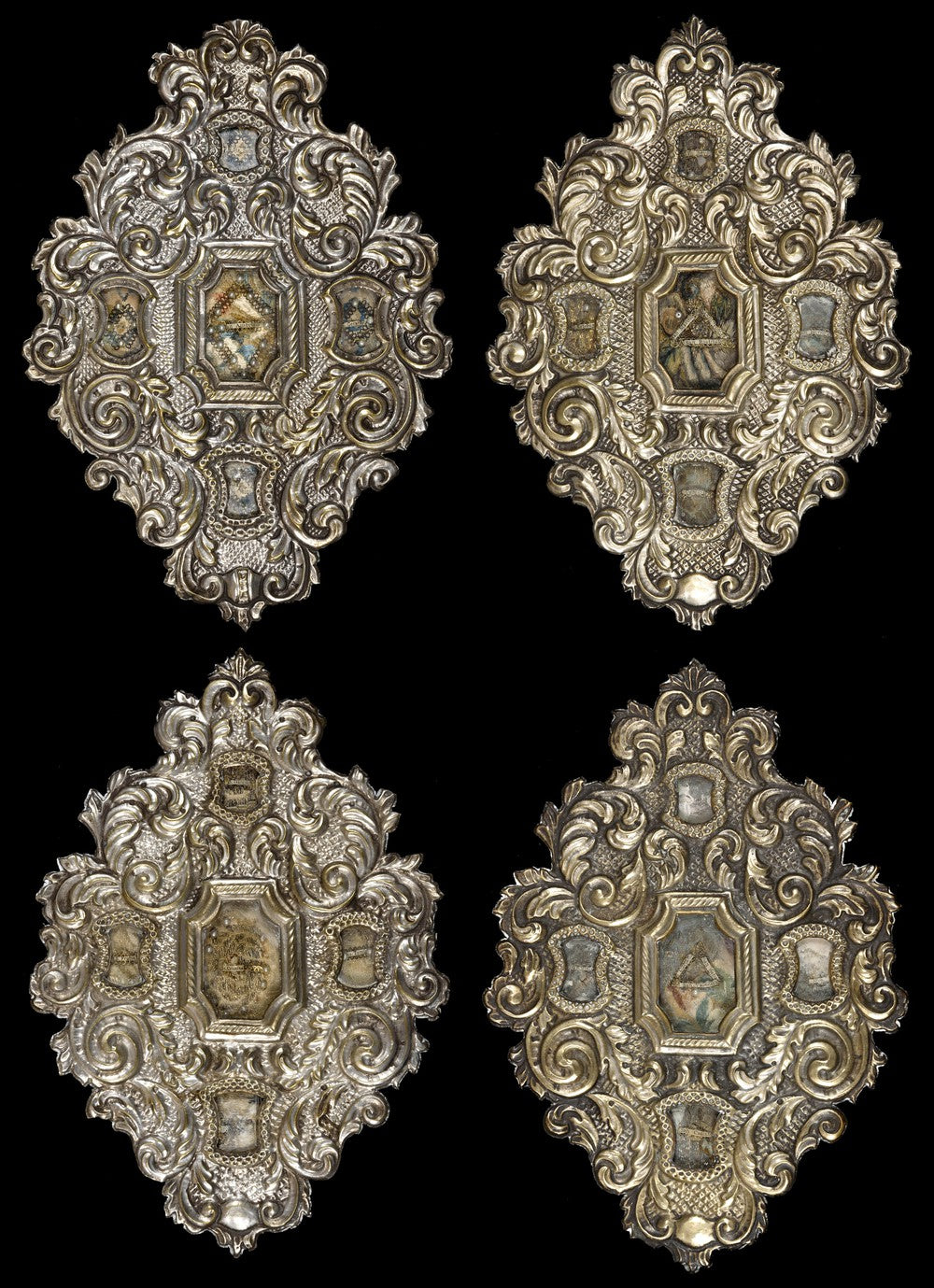SET OF 4 RELIQUARIES DEDICATED TO THE HOLY MARTYRS
SET OF 4 RELIQUARIES DEDICATED TO THE HOLY MARTYRS
Shipping calculated at checkout.
Our prices are in euros, the prices converted in dollars or other currencies can vary according to the rate.
Worldwide shipping
ref: #RK00-541Couldn't load pickup availability
This exceptional set of four Spanish reliquaries from the 18th century is a rare treasure of Baroque religious art. Crafted in repoussé and silvered brass, these pieces showcase the finesse and refinement of sacred craftsmanship of the era. Each reliquary is a true work of art, combining precious materials and intricate decorative motifs to honor the relics they house.
The sculpted design highlights acanthus leaves, scrolls, and palmettes, classic symbols of the Baroque style, rich in detail and movement. These motifs evoke vitality and nature, while bestowing a timeless elegance upon the pieces. Meticulously hammered and chiseled, every element of this decor underscores the technical mastery of the artisans of the time.
These reliquaries enshrine a total of 22 relics of saintly martyrs, dating back to the early centuries of Christianity. These sacred fragments embody profound spirituality, symbolizing faith, sacrifice, and the memory of the martyrs.
PERIOD : 18th century
DIMENSIONS : 28cm X 20cm
SIZE : 11" X 7.9"
San Severo : Saint Severus
San Esteban : Saint Stephen
San Honorata : Saint Honorat
San Damian : Saint Damien
San Marino: San Marino
San Tomas : Saint Thomas
San Restituto: Saint Restituto of Carthage
San Cornelio : Saint Cornelius
San Ambrosio : Saint Ambrose
San Gerardo : Saint Gerard
Sta Sofia: Saint Sophia of Rome
San Albino: Saint Auban
San Narcicio: Narcissus of Girona
San Frutos : Saint Frutos
Sta Cristina : Saint Christine
San Tomas : Saint Thomas
Sta Regina : Holy Queen
San Luciano : Saint Lucian
San Valentin : Valentine
Saint Sabas : Saint Sabas
San Calixto : Saint Calixte
Saint Nicholas: Nicholas of Myra
The early martyrs of Christianity played a crucial role in the history of the early Church, which was marked by severe persecution by the Roman Empire. The martyrdom of Saint Stephen, considered the first Christian martyr, had a profound impact on the Christian community. Stoned in Jerusalem for preaching the Gospel and challenging traditional religious practices, his death not only symbolized resistance to religious intolerance, but also inspired a series of persecutions against Christians in the first century. After Saint Stephen's death, other Christians, such as Saint Severus, were persecuted. Saint Severus, a Christian bishop, was executed for refusing to sacrifice to the Roman gods, an act that endangered public order and the rule of the Empire.
Saint Sophia of Rome, though often less well known, also embodies this era of suffering and martyrdom. Under the Emperor Hadrian, she refused to renounce her Christian faith, even under torture, and was sentenced to death. This heroic courage was not limited to solitary figures; it was shared by many believers of the time who, despite the cruelties of the Empire, persisted in preaching and practicing their faith. These martyrs, like Saint Sophia and Saint Severus, strengthened the nascent Christian community, becoming models of faith, courage, and fidelity to God in the face of adversity. Their sacrifices helped to grow the Christian faith, and their memories became a source of inspiration for future generations.
The discovery of the bones of the first martyred saints in the catacombs of Rome was a significant moment for the Christian Church. Over the centuries, the catacombs, the vast underground networks used as burial and prayer sites by early Christians, yielded precious relics. The discoveries of these relics reinforced the veneration of the martyred saints, and pilgrims came in ever greater numbers to honor their memory. These relics played a central role in the cult of the saints, becoming objects of devotion and powerful symbols of the victory of the Christian faith over persecution.








